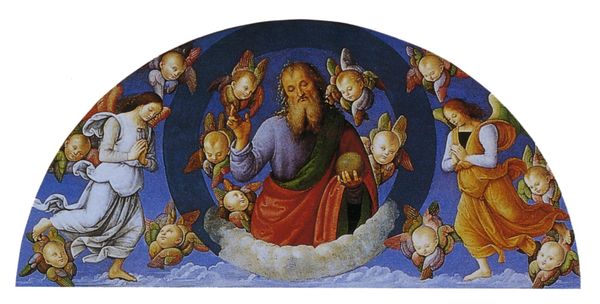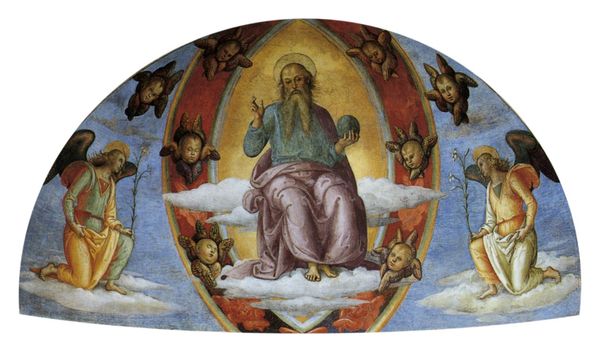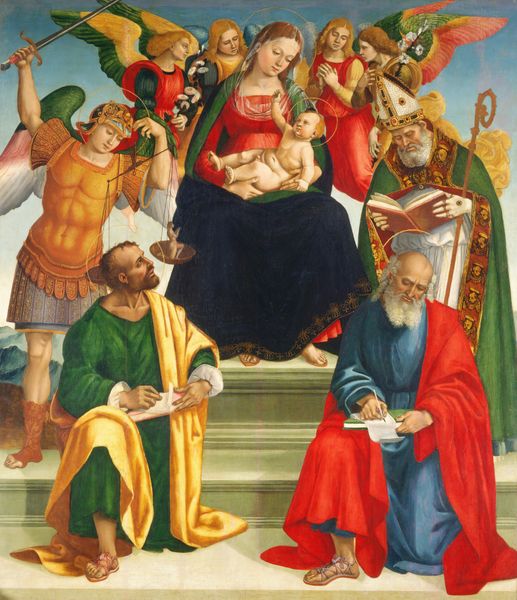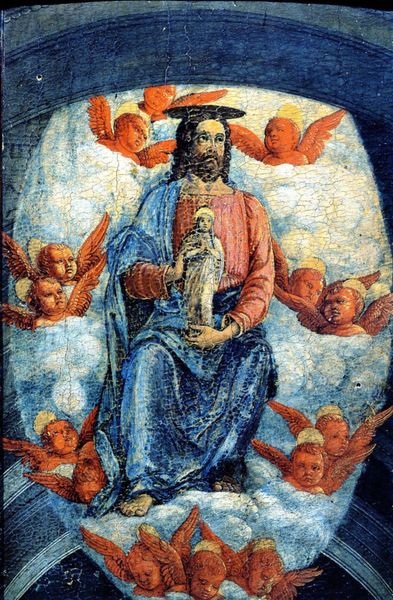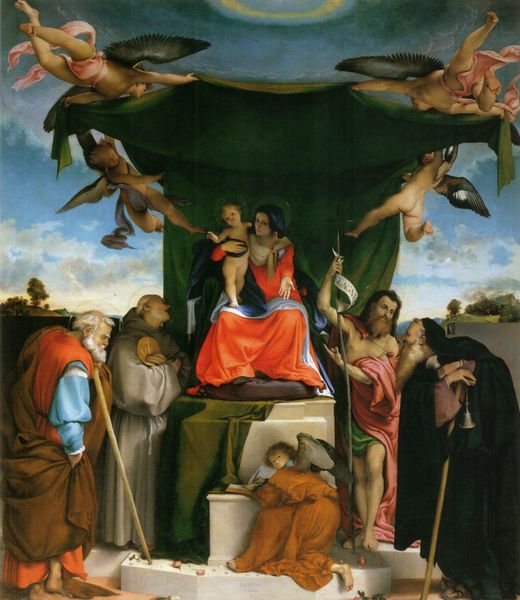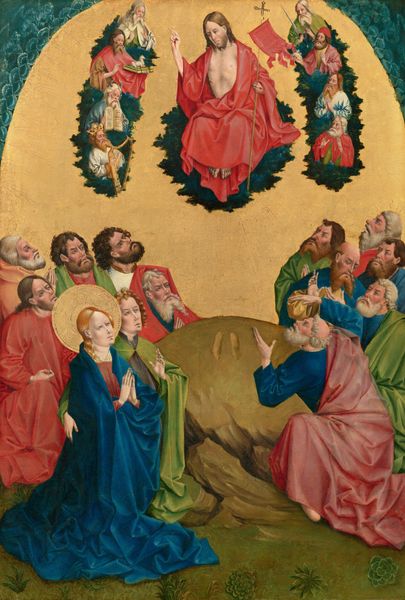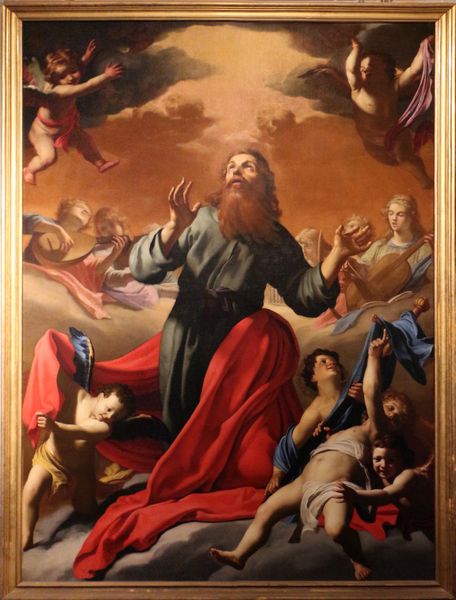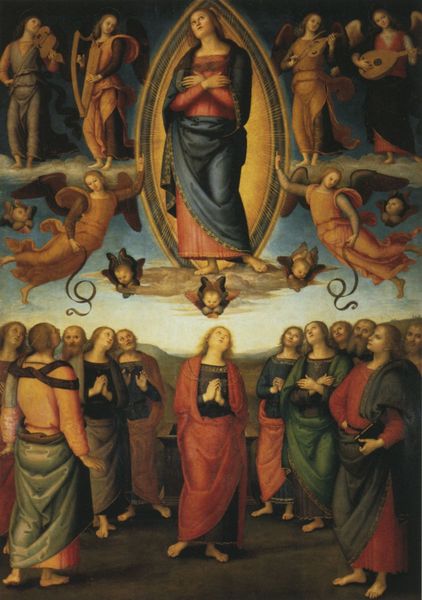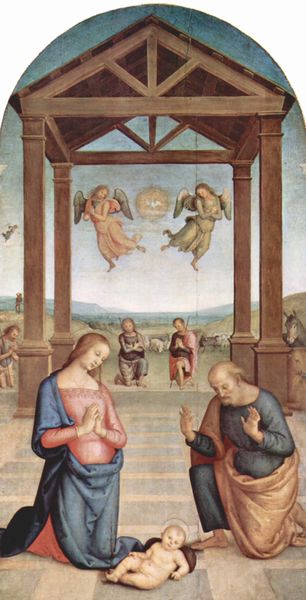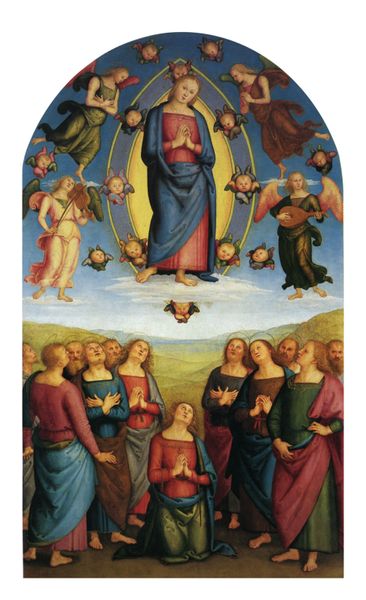
painting, oil-paint
#
portrait
#
high-renaissance
#
allegory
#
painting
#
oil-paint
#
figuration
#
oil painting
#
christianity
#
painting painterly
#
italian-renaissance
#
portrait art
Copyright: Public domain
Here is an analysis of Pietro Perugino's "Pala di Sant' Agostino (Lord Blessing)." The artwork immediately presents a symmetrical arrangement: God is seated at the center of the composition, framed by an almond-shaped halo. The halo is populated by cherubic figures arranged geometrically. The artist orchestrates a visual harmony by juxtaposing the divine figure with the playful innocence of the cherubs, a common semiotic language for divinity in Renaissance art. Perugino’s linear precision and perspective is notable. The linear structure creates an idealized vision of space that echoes the philosophical precepts of the Renaissance, creating a world governed by order and reason. The subdued palette and sfumato technique contribute to a sense of ethereal calm. Perugino employs a formal visual language to explore how earthly perception may intersect with the divine. The artist’s geometric arrangement and meticulous detailing invites us to decode its structure as a symbolic representation of divine order. This interplay between form and content creates a rich canvas for interpretation and contemplation.
Comments
No comments
Be the first to comment and join the conversation on the ultimate creative platform.
